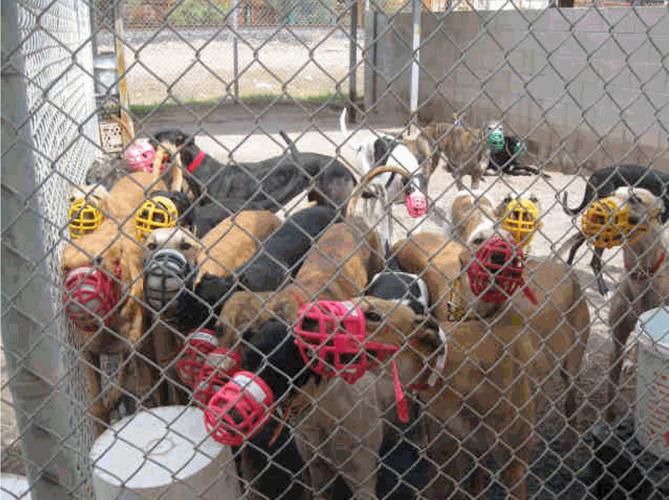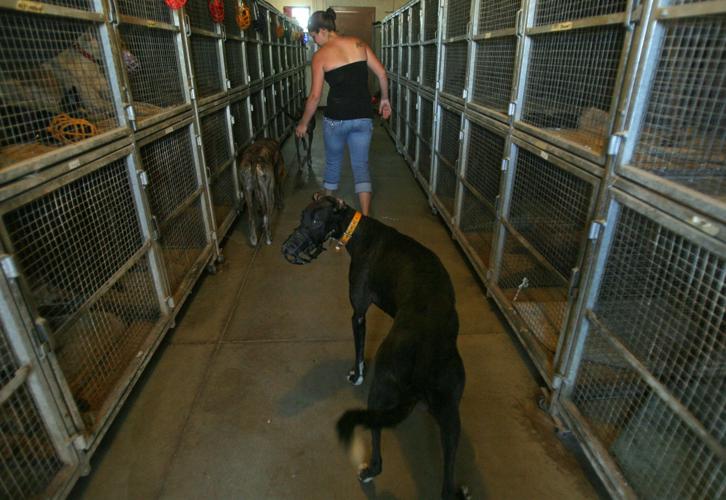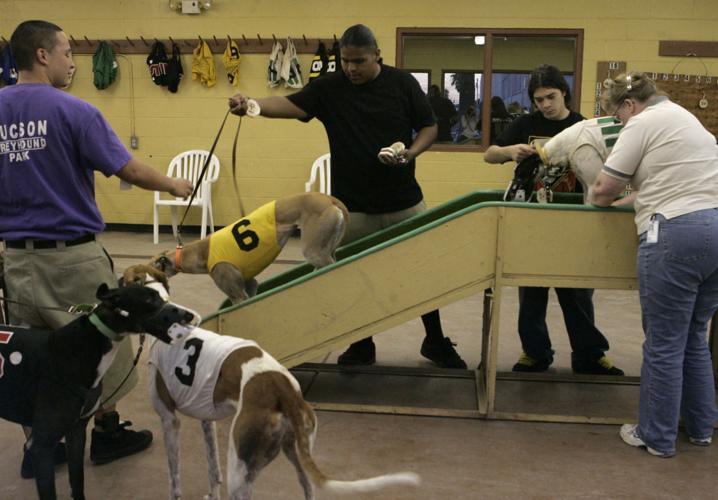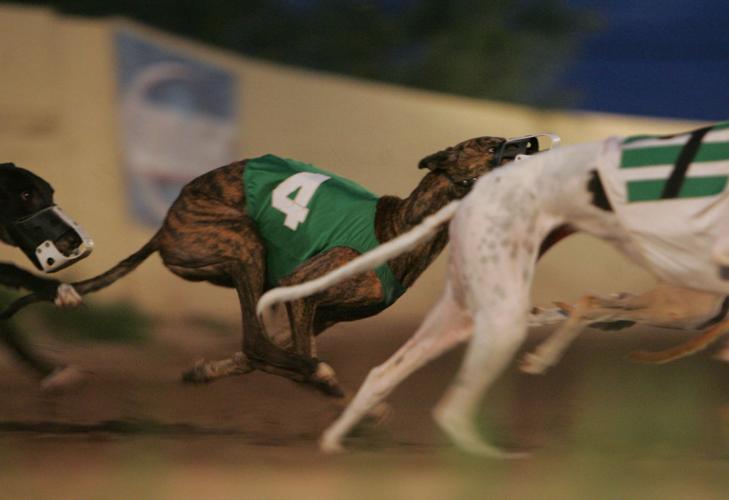Broken legs, torn muscles and other injuries dogs suffered at Tucson Greyhound Park were not reported to state authorities at least 30 times so far this year, public records show, but the agency that oversees the track says no laws were broken.
The Arizona Department of Gaming, which lists greyhound injuries online, does not include data from about 30 dogs whose injuries are noted in the track’s transfer logs. Transfer records are filed with Pima County’s Animal Care Center whenever a dog leaves the park.
Dale Popp, the track’s general manager, said injuries that happen during official races and schooling, or practice, races are attended to and then reported by on-site veterinarians. Popp said the unreported injuries must have occurred during unofficial training runs or at the kennels and were not brought to a track veterinarian’s attention.
Arizona law says the state must “obtain and maintain records regarding the injuries incurred by dogs that were used for or in connection with dog racing, including injuries incurred in schooling races.” There is no reference to the word “official.”
The law also requires that the record be updated and made available to the public “no later than 10 days after the end of each month.” No injury reports have been posted on the state site for August or September.
“If it isn’t brought to the attention of a track vet, it doesn’t generate a report,” said Amanda Jacinto, public information officer for the Department of Gaming. She said trainers might choose to take a dog to an off-site veterinarian and never report the injury, which she said is not a violation of the law. State veterinarian Andrew Carlton, who attends Tucson’s race track, did not respond to interview requests.
“That interpretation of the law is utter nonsense,” said Carey M. Theil, executive director of GREY2K USA Worldwide, a national nonprofit that works to end dog racing. “The law is crystal clear.”
Not knowing about all of the injuries diminishes the usefulness of the law, said Tucson City Councilman Steve Kozachik, a longtime critic of greyhound racing. It also prevents the public from getting an accurate idea of what’s happening at the park.
“They are run here,” Kozachik said of the dogs, “until they are run into the ground.”
END OF THE LINE
Since 2008, more greyhounds have been injured racing at Tucson’s park than at Arkansas’ one dog track or at Iowa’s two tracks combined, found a February 2015 report by the American Society for the Prevention of Cruelty to Animals and GREY2K USA Worldwide.
This is especially notable because Arizona reported no injury data from January 2010 to June 2013.
- In 2008, 2009 and from June 2013 through July 2015, there were 819 greyhound injuries reported at Tucson Greyhound Park.
- Between January 2008 through May 2015, Bluffs Run Greyhound Park and Dubuque Greyhound Park in Iowa reported a combined 797 injuries.
- During the same period, Southland Greyhound Park in Arkansas reported 764 greyhound injuries.
Popp said higher rates of injury are not due to track safety, but to the more advanced age of Tucson’s dogs and the fact so many come here at the end of their racing careers. Dogs at Tucson Greyhound Park typically have raced elsewhere and were no longer finishing fast enough to stay at more competitive tracks.
But one man who ran dogs here believes the conditions of the track caused injuries.
Jimmy Morgan, a longtime trainer and racer who moved to Colorado from Tucson more than three years ago, said that when he raced dogs here he often would walk around the track at night, picking up debris he feared could trip a galloping dog.
He said the track at that time was poorly maintained and packed hard and unevenly. He said that during that last stay in Tucson, more than 35 dogs broke their legs.
“I have never seen that in 30 years of racing,” he said.
His own dogs were not immune. One fractured its skull in a fall and had to be euthanized, while two others had to be put down because of broken legs, he said.
“If we went a week without seeing a dog get seriously hurt, it was amazing,” he said.
A review of some recent state records did not show track surface problems. However, other problems were cited, including dirty kennel conditions in 2012, when blood and feces were found on walls and in crates in one kennel.
Popp, who has been at the park for two years since moving here from Florida, said he cannot speak about things that occurred before his tenure.
During a recent tour of the track, Popp picked up a handful of the dirt used on the track, explaining it is made mostly of standard soft sand. He said the surface is groomed carefully before each race. When dogs fall, he said, it is typically because they run into each other while moving as fast as 40 miles per hour.
“These dogs are athletes,” he said. “There is no way to eliminate injuries altogether.”
“TRAGIC ACCIDENT”
Dog racing is illegal in 39 states, but 21 tracks still operate in seven states. Tucson Greyhound Park is the last one in Arizona.
Of the states where racing is still underway, five are required to make some injury data public. However, what is required varies from state to state, with some states providing reports only on serious injuries, such as broken limbs. Florida and Alabama do not provide any injury data.
Arizona records on Tucson injuries from July 1, 2014, through June 30, 2015, show 130 injuries reported out of 30,216 starts, with 37 dogs suffering bone fractures and two dogs dying. One broke its back and was euthanized after running into another dog, and the second died — likely of heatstroke — after a race.
Earlier in 2014, another dog died of electrocution after it slipped under the inside rail and became tangled in electric wiring.
Popp said public perception and reporting on the track has been biased toward its closure, so “that often means facts are distorted.” He said when the dog was electrocuted, for example, it quickly was rumored that two dogs had died that way in a month.
“It happened once in 40 years of racing here, but now the track is a death trap,” he said. He called the electrocution a “tragic accident.”
Popp pointed out that a 6-inch steel rail that has been added so, he said, another dog doesn’t get tangled in the electrical wiring that’s connected to the lure, or fake rabbit.
He declined a visit to the kennels during the track tour and several times afterward. He said the kennel managers need to approve visitors and that no one offered.
County reports on the kennels show no violations during annual inspections in 2013, 2014 and 2015.
However, inspectors had difficulty accessing the kennels on at least two occasions when they showed up unannounced. They were asked to return later because, they were told, the kennel managers were not available.







